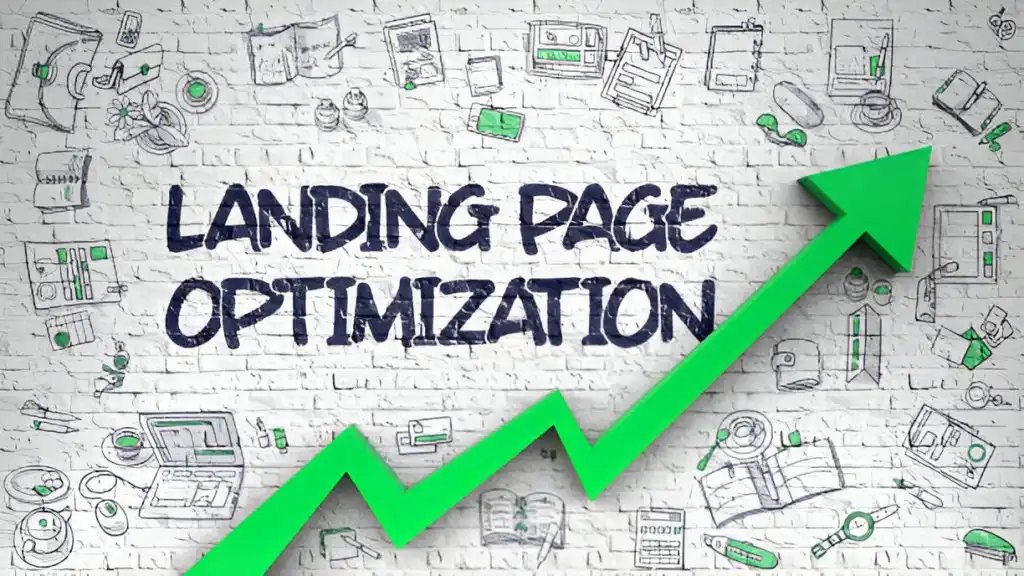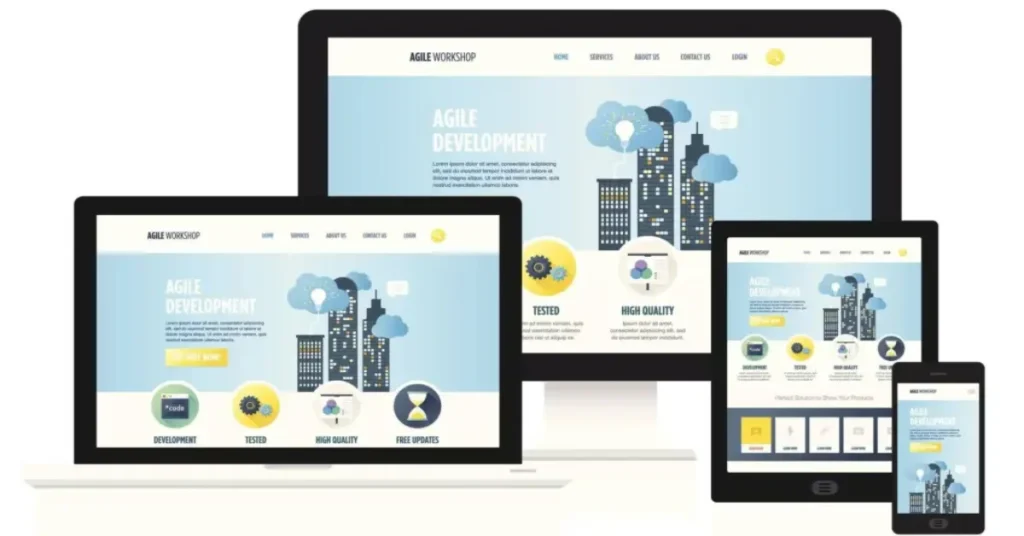When you need to make a strong online impression, a WordPress landing page is your secret weapon. I often hear people ask, “What exactly is a landing page?” Think of it as a focused digital doorway. Unlike your main website, which has many paths, a landing page has one clear purpose: to guide visitors towards a single action. This could be signing up for a newsletter, downloading an e-book, or making a purchase.
WordPress, known for its flexibility, makes building these powerful pages easier than ever. It gives you the control you need without breaking the bank. Let’s explore how WordPress helps you create landing pages that get real results.
The Power of a WordPress Landing Page

A WordPress landing page serves a very specific role in your online efforts. It isn’t a general website page. It exists to convert visitors into leads or customers. Imagine someone clicks on your ad. They land on this dedicated page. Everything on it aims to persuade them to take the next step.
Successful landing pages share several key elements. First, a compelling headline grabs attention. It tells visitors instantly what you offer. Next, clear, benefit-driven copy explains why your offer matters. A prominent call-to-action (CTA) button then guides them. This button tells them exactly what to do, like “Download Now” or “Get Your Free Quote.”
Visuals play a big part too. High-quality images or videos can effectively convey complex ideas quickly. A well-placed form collects necessary information. Social proof, like testimonials or trust badges, builds confidence. Finally, a good landing page removes distractions. There are no extra navigation menus pulling visitors away from the main goal. WordPress gives you the tools to put all these pieces together.
Why Choose WordPress for Your Landing Pages?
Many people wonder if WordPress is the right choice for their landing pages. I say! WordPress offers many advantages.
First, consider its amazing flexibility. You can customize nearly anything. With countless themes and plugins, you shape your page exactly how you want. This means your brand shines through. Second, it saves you money. WordPress itself is free and open-source. Many high-quality plugins and themes also come at no cost or for a small fee. This makes it a cost-effective solution for businesses of all sizes.
The WordPress ecosystem is another big plus. Thousands of plugins exist for every need. You find tools for page building, forms, search engine optimization (SEO), and analytics. This vast selection means you rarely need to look elsewhere. It’s also quite easy to use. The user-friendly interface helps you manage content even without technical skills. Lastly, WordPress is naturally friendly to search engines. It comes with built-in features and popular plugins that help your pages rank well.
Of course, no platform is perfect. WordPress does require some maintenance. You need to keep your core software, themes, and plugins updated. This keeps your site secure and running smoothly. There might be a learning curve for advanced customization, but many resources exist to help you. Plugin conflicts can also happen, but careful selection and testing prevent most issues. Overall, the benefits far outweigh these minor challenges.
Building Your WordPress Landing Page: A Step-by-Step Guide

Creating a WordPress landing page is simpler than you might think. You have a few great options for construction.
Choosing Your Construction Method
- Drag-and-Drop Page Builders: These are my top recommendations for most users. They let you design visually. You see your changes as you make them. Popular choices include Elementor, SeedProd, and Divi Builder. They offer pre-made templates you can easily customize. No coding skills? No problem! You just drag elements onto your page.
- The Gutenberg Block Editor: WordPress’s native editor, Gutenberg, also works well. You use “blocks” to add content like text, images, and buttons. It offers patterns and reusable blocks to speed up your workflow. It’s a powerful tool, especially for simpler landing pages or if you prefer to stick within the WordPress core.
- Custom Coding: For those with coding knowledge, this offers ultimate control. You can build every element from scratch. This allows for unique designs and specific functionalities not found in builders. Most users, however, will find builders or Gutenberg more than sufficient.
Essential Setup & Design Steps
Once you choose your method, follow these steps:
- Create a New Page: Start a fresh page in WordPress. Many themes and page builders offer “blank” or “landing page” templates. These remove the header, footer, and sidebars for a focused design.
- Add Your Headline: Make it clear and compelling. It should tell visitors what they get.
- Craft Your Copy: Write benefit-focused text. Explain why your offer solves their problem.
- Insert Visuals: Use high-quality images, graphics, or videos. These grab attention and explain your offer quickly.
- Design Your Form: If you need lead information, use a form plugin like WPForms or Contact Form 7. Keep fields to a minimum.
- Place Your Call-to-Action (CTA): This button is vital. Make its text clear (e.g., “Get My Free E-book,” “Claim Your Discount”). Use a contrasting color to make it stand out. Place it where users can easily see it.
- Add Social Proof: Include testimonials, customer reviews, or trust badges. These build confidence and credibility.
- Remove Distractions: Make sure your landing page has no extra navigation menus, sidebars, or footers. The goal is singular focus.
If you are just starting your online journey and want to understand the fundamentals of getting a presence online without writing a single line of code, I’ve got you covered. I’ve broken down the easy way to build a website for beginners (no coding needed!) in a previous post, offering even more detail on setting up your online foundation.
Optimizing Your WordPress Landing Page for Maximum Conversions

Building a page is one thing; making it convert is another. Here’s how to supercharge your WordPress landing page:
Design & Layout Best Practices
- Above the Fold: Your most important content should be visible without scrolling. This includes your headline, a clear image, and your primary CTA.
- Mobile Responsiveness: Over 60% of website traffic comes from mobile devices, according to Statista’s 2024 report. Your page must look perfect on phones and tablets. Page builders usually handle this automatically.
- Visual Hierarchy: Guide your visitor’s eye. Use larger fonts for headlines, contrasting colors for CTAs, and clear spacing to make important elements pop.
- Whitespace: Don’t cram everything together. Ample whitespace makes your page easy to read and focus on.
- Color Psychology: Colors evoke emotions. Red can signal urgency, and blue can convey trust. Use colors strategically for your brand and message.
Compelling Copywriting
- Focus on Benefits: Instead of listing features, tell visitors how your product or service will improve their lives.
- Address Pain Points: Show you understand their problems. Then, present your offer as the solution.
- Be Clear and Concise: Use simple language. Avoid jargon. Get straight to the point.
- Create Urgency (Sparingly): Limited-time offers or limited stock can encourage faster action, but use this authentically.
Call-to-Action (CTA) Optimization
- Clear Language: Use action verbs like “Get,” “Download,” “Start,” and “Join.”
- Strategic Placement: Include your CTA button multiple times if your page is long. Place one above the fold.
- Contrasting Colors: Make your CTA button stand out from the rest of your page design.
- Button Sizing: Make it large enough to click easily on any device.
Building Trust & Credibility
- Testimonials and Case Studies: Real words from happy customers are powerful. Place them near your CTA.
- Trust Badges: Display security seals (SSL, payment processors), awards, or reputable client logos.
- Privacy Policy Link: If collecting data, link to your privacy policy. This builds transparency.
- Guarantees: A money-back guarantee or free trial reduces risk for your visitor.
Form Optimization
- Minimize Fields: Only ask for information you truly need. Every extra field reduces conversions. A 2023 study by HubSpot found that reducing form fields from 11 to 4 can increase conversion rates by over 120%.
- Multi-Step Forms: For more complex data collection, break forms into smaller steps. This feels less overwhelming.
- Clear Error Messages: Help users correct mistakes easily if they input the wrong information.
- Thank You Pages: Redirect users to a thank-you page after submission. This confirms success and provides next steps.
Expanding Your WordPress Landing Page Horizons: Advanced Strategies

Even if you’ve mastered the basics, there are exciting avenues to explore with your WordPress landing pages. Many online resources cover general best practices. But what if your business has very specific needs? Let’s explore how to create even more powerful and tailored landing pages.
Tailoring Strategies for Specific Industries
Think about your industry. Does a one-size-fits-all approach truly work? I believe there’s immense value in customizing your approach.
- Software as a Service (SaaS) & Tech Companies: Your landing pages could feature interactive product demos or free trial sign-ups. Think about a page dedicated to a specific software feature, like “Smart Analytics Dashboard,” with short video explanations and a direct path to a free demo.
- E-commerce Businesses: Beyond general product pages, create specific pages for flash sales or new product launches. Imagine a “Limited Edition Summer Collection” landing page with countdown timers, high-quality lifestyle imagery, and clear pricing options.
- Local Service Businesses: If you run a plumbing service in San Diego, your page should focus on local testimonials and a clear “Request a Quote” form. Show a map of your service area. This speaks directly to local customers.
- Healthcare Providers: If your practice collects sensitive information, compliance is paramount. Your pages must use secure forms and clearly state privacy policies, like those required by HIPAA. Security is not just a feature; it’s a legal necessity.
- Financial Services: For investment firms or loan providers, your pages need clear disclosures and terms. They must adhere to financial regulations. Building trust through transparency is key here.
We can also consider tailoring for different US demographics or regions. Someone looking for a solar panel installation in Arizona might respond to different imagery and messaging than someone in New York. The hot, sunny landscape of Arizona might highlight energy independence, while New York might focus on environmental impact or tax incentives. Understanding these subtle differences makes your pages more effective.
Deeper Analytics and Marketing Integrations
Standard analytics tell you what happened. Deeper integrations tell you why and what’s next.
- Seamless CRM & Email Marketing Integration: Your WordPress forms shouldn’t just send you an email. They should push data directly into your Customer Relationship Management (CRM) system, like HubSpot, Salesforce, or Zoho CRM. This instantly adds new leads to your sales pipeline. Similarly, integrate directly with email marketing platforms like Mailchimp or ConvertKit. New sign-ups automatically get added to your newsletter, triggering automated follow-up sequences. This saves time and makes sure no lead falls through the cracks.
- Sophisticated A/B Testing: Beyond changing a button color, you can test entirely different page layouts, headlines, or even value propositions. Tools exist within WordPress to run these tests. For example, you might test how a video on the page compares to a static image for conversion rates. Understanding statistical significance helps you trust your results.
- Personalized & Dynamic Content: Imagine your landing page changing based on who’s visiting. If someone comes from an ad about “online courses,” your page shows content relevant to courses. If they come from a search about “leadership training,” it shows leadership-specific content. This dynamic content can adjust based on location, previous website visits, or referral source. It creates a highly relevant experience for each visitor.
- Comprehensive Conversion Tracking: Setting up Google Analytics 4 (GA4) correctly is vital. You can track specific events: when someone clicks a button, watches a video, or submits a form. This tells you exactly how users interact with your page and helps measure your return on investment.
Optimizing for Top Performance & Robust Security
Speed and security are not just buzzwords; they are conversion factors.
- Advanced Caching & CDN: Fast-loading pages keep visitors engaged. Implementing powerful caching solutions (like WP Rocket) and Content Delivery Networks (CDNs like Cloudflare) dramatically reduces load times, especially for users across different US regions. A page that loads in under 2 seconds performs significantly better.
- Enhanced Security for Data Collection: If your landing page gathers sensitive data (like payment information or personal details), security is paramount. Ensure your SSL certificate is correctly installed. Use robust form security measures to prevent spam and data breaches. Regularly update all WordPress components to patch vulnerabilities. A data breach damages trust and can lead to severe penalties.
- Troubleshooting Common Technical Hurdles: Sometimes, plugins conflict, or themes don’t play well with page builders. Knowing how to diagnose these issues, check error logs, and perform plugin conflict tests ensures your landing pages remain functional and effective.
Strategic Planning & Campaign Management
Building a single page is one thing. Building a campaign is another.
- Integrating Pages into Your Marketing Funnel: Your WordPress landing page isn’t an island. It’s a crucial part of your entire marketing strategy. How does it connect to your Google Ads, social media campaigns, or email sequences? Think about the entire user journey.
- Managing Many Landing Pages: If you run many campaigns, you might have dozens of landing pages. How do you keep them organized? Consider using consistent naming conventions, categorization, and perhaps WordPress multisite for large-scale operations. Track their performance individually and collectively.
- Budgeting & Return on Investment (ROI): Understanding the cost of your WordPress hosting, premium plugins, and ad spend is crucial. Calculate the ROI for each landing page campaign. Did the leads generated justify the cost? This helps you refine future strategies.
Choosing the Right Tools for Your WordPress Landing Page Toolkit

You have many excellent tools at your disposal:
- Page Builders: Elementor, SeedProd, Divi, Beaver Builder, Thrive Architect. Each offers unique features.
- Form Plugins: WPForms, Contact Form 7, Formidable Forms. These help you create any kind of form.
- SEO Plugins: Yoast SEO, Rank Math. They guide you in optimizing content for search engines.
- Caching/Performance: WP Rocket, LiteSpeed Cache. These speed up your pages significantly.
- Analytics Integration: MonsterInsights helps you connect Google Analytics 4 to your WordPress site easily.
- A/B Testing: Many page builders offer built-in A/B testing. For advanced needs, specific plugins exist.
Conclusion: Empower Your Online Efforts with WordPress Landing Pages
A WordPress landing page is a powerful instrument in your online strategy. It brings focus, drives specific actions, and ultimately helps you achieve your business goals. From basic setup to advanced optimization and understanding niche-specific strategies, WordPress provides the tools.
By focusing on clear design, persuasive copy, and smart integrations, you can create highly effective landing pages. Remember to constantly test and refine your pages to get the best results. Start building your next impactful WordPress landing page today!





